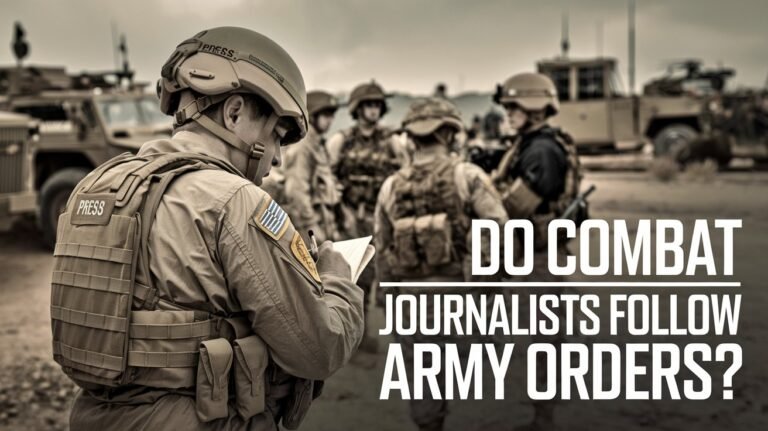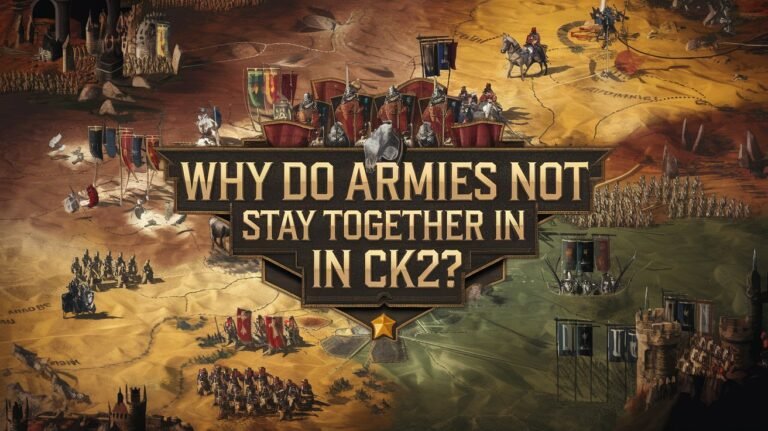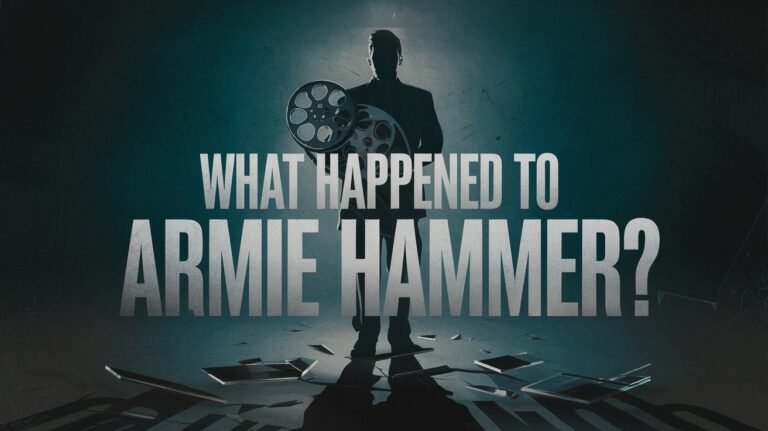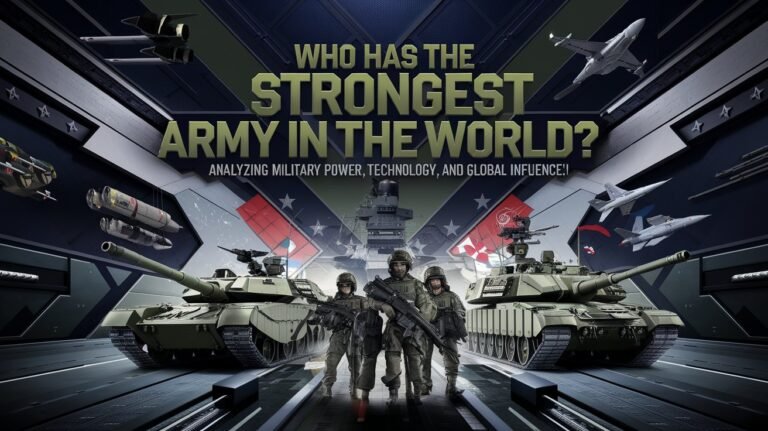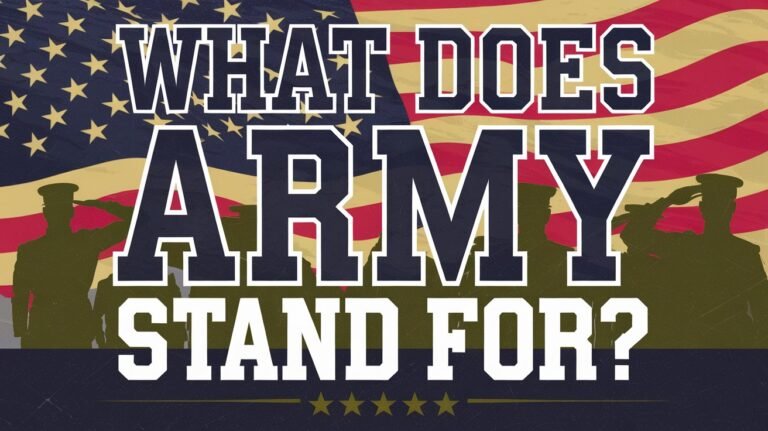Are Marines Given The Same Rifle The Army Uses?
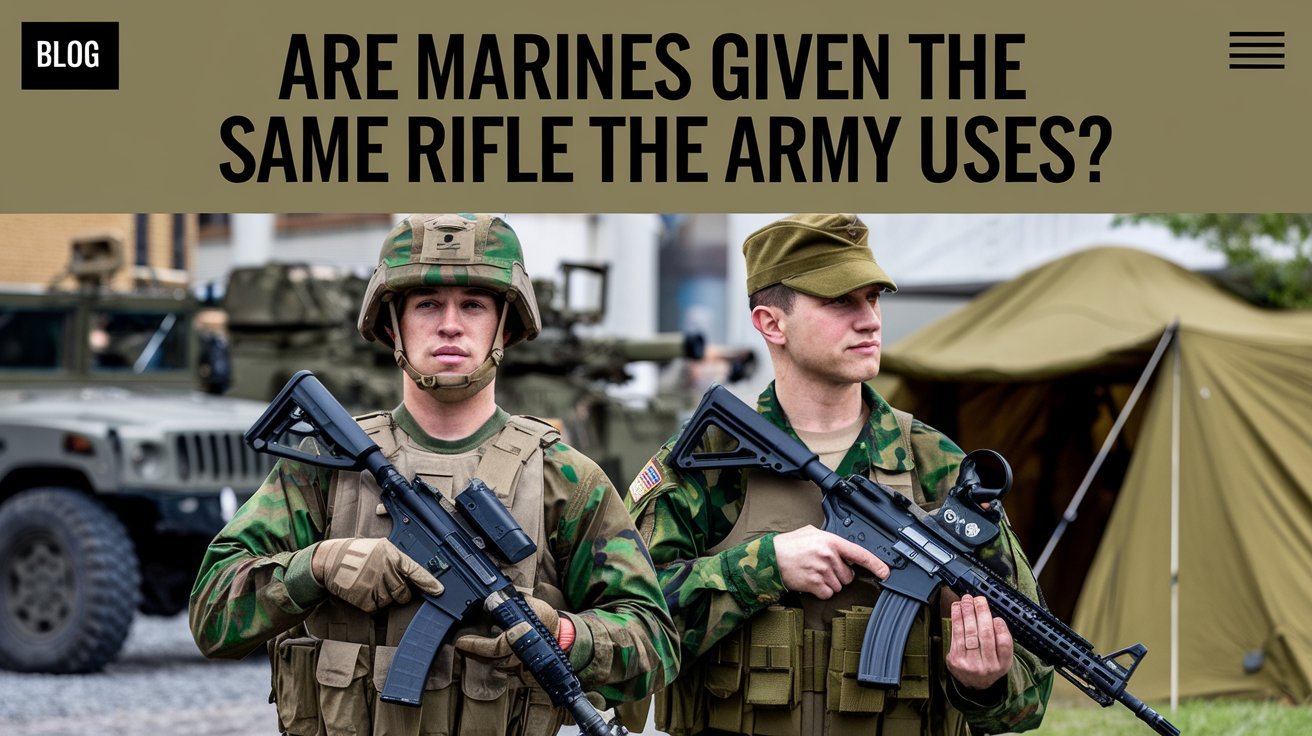
The U.S. Marine Corps and Army are both part of the U.S. Armed Forces. But they use different primary rifles in combat. The Marine Corps uses the M27 Infantry Automatic Rifle (IAR). On the other hand, the Army prefers the M4 Carbine.
Every Marine learns to be a skilled rifleman. They are trained to use their service weapon well. This is because the Marine Corps focuses on being ready to move quickly and deploy fast.
Both branches also have other weapons like machine guns and grenade launchers. These help support their infantry units. This guide will look at the main differences between the rifles used by Marines and the Army.
It will give detailed specs and performance insights. This will help understand what makes each rifle special. By comparing the M27 IAR and M4 Carbine, readers will get a full picture of the rifles used by the U.S. Armed Forces.
Current Service Rifles: M27 IAR vs M4 Carbine
The U.S. Marine Corps and Army have their own service rifles. The Marines use the M27 Infantry Automatic Rifle (IAR). The Army’s standard is the M4 Carbine. These rifles are key to each branch’s tactics and abilities.
M27 Infantry Automatic Rifle Specifications
The Marine Corps adopted the M27 IAR in 2010. It replaced the M249 Squad Automatic Weapon. The Corps planned to buy 6,500 M27s, aiming to arm every infantry squad member.
The M27 has a longer, thicker barrel. This gives it a longer range and less overheating than the M4 Carbine.
M4 Carbine Technical Details
The M4 Carbine is the Army’s go-to rifle. It’s a 5.56mm, magazine-fed, gas-operated, air-cooled, shoulder-fired weapon. It weighs 6.9 pounds with a 30-round magazine and is 29.75 inches long with the stock closed.
The M4’s maximum effective range is 500 meters for point targets and 600 meters for area targets.
Key Performance Differences
The M27 IAR and M4 Carbine can both fire in semi-automatic or three-round burst modes. The M27 has a 100 to 150 meters longer effective range than the M4. Experts say the M27 is a better rifle.
But, the M27 costs up to $3,000 per unit. The M4 costs less than $1,000.
| Specification | M27 IAR | M4 Carbine |
|---|---|---|
| Caliber | 5.56mm | 5.56mm |
| Effective Range | 600 yards | 500 yards |
| Rate of Fire | 40 rounds/min | 700-950 rounds/min |
| Weight (w/ 30-round magazine) | 9.5 lbs | 6.9 lbs |
| Cost per Unit | $3,000 | Less than $1,000 |
Are Marines Given the Same Rifle the Army Uses
The U.S. Army and Marine Corps use similar military equipment. But, they don’t use the same rifles. Marines use the M27 Infantry Automatic Rifle (IAR). The Army’s standard rifle is the M4 Carbine.
The Marine Corps gets new weapons a few years after the Army. This means Marines use slightly older equipment. But, the performance is similar. Both branches also use rockets, missiles, and grenade launchers, with some differences in models.
Marines and Army don’t use the same rifle. But, they use similar military rifles for their service weapon needs. The Marine Corps focuses on marksmanship and combat readiness. They make sure every Marine is good with their service weapon.
Marine Corps Weapons Systems and Training
The Marine Corps focuses a lot on rifle skills. All Marines, no matter their job, get a lot of weapons training. This makes the Marine Corps stand out, unlike the Army.
Basic Rifle Marksmanship Standards
Marine recruits get a rifle at boot camp and use it a lot. They learn the basics of shooting, like aiming right and controlling their breath. These skills help them meet the Marine Corps’ standards.
Advanced Combat Shooting Techniques
Marine Corps training doesn’t just stop at basics. They learn to shoot from far away and from different spots. They also get training in moving as a team and attacking in groups. This makes sure all Marines are ready for battle, even if they’re not in the infantry.
Weapon Maintenance Protocol
Keeping weapons in good shape is key for Marines. They learn how to take apart, clean, and put back together their marine corps rifles and infantry weapons. This shows the Marine Corps’ dedication to being ready for combat.
Army Infantry Weapon Configuration
The U.S. Army’s main rifle is the M4 Carbine. It’s compact and versatile, serving as the core of the Army’s ground forces for years. Army platoons have smaller squads than the Marines. Each squad has a leader and two four-man teams.
Each team in an Army squad has a leader, an automatic rifleman, a grenadier, and a rifleman. They all use the reliable M4 Carbine. The Army also has a dedicated weapons squad in each platoon. They carry M240B machine guns and Javelin anti-tank missiles.
This setup of army rifles, military rifles, and infantry weapons gives Army platoons strong firepower. It helps them face many combat situations and threats. The mix of rifles, machine guns, and special systems makes the Army ready for modern war.
Ammunition Types and Combat Applications
Marine Corps and the Army use rifles like the M27 Infantry Automatic Rifle and the M4 Carbine. These rifles fire 5.56mm ammunition. This includes the M855 Ball round, the M196 and M856 Tracer rounds, and special rounds like the M199 Dummy and M200 Blank rounds.
Ball Ammunition Specifications
The M855 Ball round has a green tip. It’s used for better penetration and ballistics. This full-metal jacket bullet works well in many combat situations with small arms and infantry weapons.
Tracer Round Usage
Tracer rounds, like the M196 and M856, are mixed with ball ammo at a 1:4 ratio. They have red tips. These rounds help soldiers see where their shots are going, making it easier to hit targets. They also help mark targets for military rifles.
Special Purpose Ammunition
- M199 Dummy Rounds: These rounds have six grooves and no propellant or primer. They’re safe for training.
- M200 Blank Rounds: With a violet tip, these rounds are for simulations and non-lethal uses.
Equipment Differences Between Marine and Army Units
The United States Marine Corps and Army have different equipment. They use similar marine corps rifles and army rifles. But, they have different unit-level equipment and support systems.
Marine platoons have three rifle squads with three fire teams each. Army platoons have smaller squads but include an extra weapons squad. This affects the military rifles and infantry weapons each unit gets.
- Marines use the Shoulder-Launched Multipurpose Assault Weapon (SMAW) for rocket launching. Army units might use SMAWs, AT-4s, or Javelins.
- The Army is adopting the M320 grenade launcher. Marines still use the M203.
Marine and Army units also differ in support. Marine units in a Marine Expeditionary Unit (MEU) have their own artillery and air support. Army units often need external air and naval support for these.
| Equipment Aspect | Marine Corps | U.S. Army |
|---|---|---|
| Infantry Squad Composition | 3 rifle squads, each with 3 fire teams | Smaller squads with an additional weapons squad |
| Rocket Launcher | Shoulder-Launched Multipurpose Assault Weapon (SMAW) | SMAW, AT-4, or Javelin |
| Grenade Launcher | M203 | M320 |
| Organic Support | Artillery and air support within Marine Expeditionary Unit (MEU) | Rely on external air and naval support |
Weapon Attachments and Modifications
The U.S. Army and Marine Corps use many attachments and modifications for their assault rifles and small arms. These upgrades include optical sights, combat accessories, and special equipment. They aim to boost accuracy, lethality, and combat effectiveness.
Optical Sighting Systems
They use the AN/PVQ-31A and AN/PVQ-31B Rifle Combat Optics, M7 RCO, Specter DR El Can Optic, and Squad Day Optic. These systems help soldiers and Marines see targets better, even in low light or at long ranges.
Combat Accessories
Both services also add various service weapons attachments and modifications. These include:
- Tactical latches for charging handles
- Ambidextrous safety actuators and magazine releases
- Grenade launchers like the M203A2 and SU 277 Grenade Launcher Sight
- Slings, backup iron sights, and suppressors
These accessories make the Army and Marine Corps’ rifles and carbines more versatile, ergonomic, and deadly.
Army usually gets new upgrades before the Marine Corps. But both branches strive to make their assault rifles and small arms ready for modern warfare.
| Attachment | Description | Advantage |
|---|---|---|
| Rifle Combat Optic (RCO) | Magnified optical sight with ballistic reticle | Improved target acquisition and accuracy at extended ranges |
| M203 Grenade Launcher | Underbarrel-mounted 40mm grenade launcher | Increased firepower and versatility in combat situations |
| Tactical Sling | Adjustable sling for carrying and stabilizing the weapon | Improved weapon control and handling during movement and transitions |
Combat Effectiveness and Field Performance
The U.S. military’s ground forces, like the Marine Corps and Army, have different ways to fight. The Marines focus on fighting from the sea. Army units are good at fighting in many places, like in the air, mountains, or with machines.
Marine infantry units are trained in specific skills, such as using rifles or machine guns. Army infantry starts as standard soldiers, but can learn special skills later. Both have elite teams, like Marine Force Recon and Army Rangers, for tough missions.
New rifles, infantry weapons, and weapon systems have changed how these forces fight. The 5.56x45mm cartridge’s weaknesses led to looking at heavier bullets. This is because many fights in Afghanistan happen far away.
To solve these problems, the U.S. military has brought in new guns. These include Designated Marksman Rifles (DMRs) and the Enhanced Battle Rifle. These tools help soldiers hit their targets from far away, making them better fighters.
Evolution of Service Weapons in Both Branches
The US armed forces, including the Marine Corps and Army, have seen big changes in their weapons. The Army often leads in adopting new rifles and upgrades. Then, the Marine Corps follows.
The Army switched from the M16 rifle to the M4 Carbine. The Marine Corps, on the other hand, kept a focus on rifle marksmanship. They recently adopted the M27 Infantry Automatic Rifle (IAR) as their main weapon.
Both branches are always looking for ways to improve their weapons. They’re exploring new ammunition, like the 6.8mm round, and adding advanced optics and accessories. These changes aim to make their small arms more effective and versatile.
| Weapon | Caliber | Capacity | Years in Service |
|---|---|---|---|
| M-1 Garand | .30-06 | 8 rounds | 1936-1959 |
| M-14 | 7.62mm | 20 rounds | 1959-present (limited use) |
| M-16 | 5.56mm | 30 rounds | 1964-present |
| M4A1 | 5.56mm | 30 rounds | 1994-present |
| M249 SAW | 5.56mm | Belt-fed | 1984-present |
Evolution of weapons in the US armed forces shows their dedication to their troops. They want to give them the best small arms for modern warfare. As new tech and needs come up, both branches will keep updating their weapons to stay ahead.
Modern Combat Requirements and Future Developments
The U.S. Marine Corps and Army are working hard to give their troops the best rifles. They want to improve accuracy, make the rifles lighter, and add better optics. They also want to make the rifles more flexible for complex battles.
The Army has a new deal with SIG Sauer for the XM5 rifle and XM250 automatic rifle. These will replace old rifles and machine guns. They use a new 6.8 mm cartridge and a smart fire control system. This makes them better for close fights.
Looking ahead, the services are looking at even newer rifles. They might use new materials, better bullets, and smart electronics. These changes will help soldiers stay safe and aware in battle. With these upgrades, the military’s ground forces will keep getting better at fighting modern battles.
Common Problems
What are the primary service rifles used by the Marine Corps and Army?
The Marine Corps uses the M27 Infantry Automatic Rifle (IAR). The Army’s standard infantry rifle is the M4 Carbine.
Are Marines given the same rifle the Army uses?
No, Marines and Army soldiers do not use the same rifle. The Marine Corps has the M27 IAR. The Army uses the M4 Carbine. Each branch has its own equipment and preferences.
What are the key differences between the M27 IAR and the M4 Carbine?
The M27 IAR is a 5.56mm, magazine-fed, gas-operated rifle. The M4 Carbine is also a 5.56mm, magazine-fed, gas-operated weapon. The M27 IAR is slightly heavier and has a longer barrel than the M4 Carbine.
How does the Marine Corps train its riflemen?
Marine Corps training focuses on rifle skills for all Marines. Basic training includes weapons instruction. This covers safety, weapon conditions, and maintenance.
What is the typical infantry squad configuration in the Army?
An Army rifle squad has a squad leader and two fire teams. Each fire team has a team leader, automatic rifleman, grenadier, and rifleman. The Army also has a dedicated infantry weapons squad in each platoon.
What types of ammunition are used with the Marine and Army service rifles?
Both the M27 IAR and M4 Carbine use 5.56mm ammunition. This includes M855 Ball and M196 Tracer rounds. Ball ammunition is the main type, with tracers used in a 1:4 ratio to prevent fouling.
How do the equipment and organization differ between Marine and Army infantry units?
Marine platoons have three rifle squads with three fire teams each. Army platoons have smaller squads and an additional weapons squad. Marine units often have organic artillery and air support. Army units rely more on external support.
What types of weapon attachments and modifications are used with the service rifles?
Both branches use attachments and modifications to improve rifle performance. These include optical sights, lasers, and hand grips. The Army usually gets these upgrades before the Marine Corps.
How do the Marine Corps and Army approach combat effectiveness differently?
Marines focus on amphibious warfare. Army units specialize in specific terrains or tactics. Marines categorize infantry by weapons systems and tactics. The Army initially trains all infantrymen as standard or indirect fire specialists.
How have the service rifles evolved in the Marine Corps and Army?
The Army has adopted new rifle models and upgrades before the Marine Corps. This includes the transition from the M16 to the M4 Carbine. The Marine Corps has focused on rifle marksmanship and recently adopted the M27 IAR.
What are the modern combat requirements driving future developments in service rifles?
Modern requirements include improved accuracy, reduced weight, and enhanced optics. Both branches are exploring next-generation systems. These may include advanced materials, improved ammunition, and integrated electronics for increased lethality and situational awareness.


